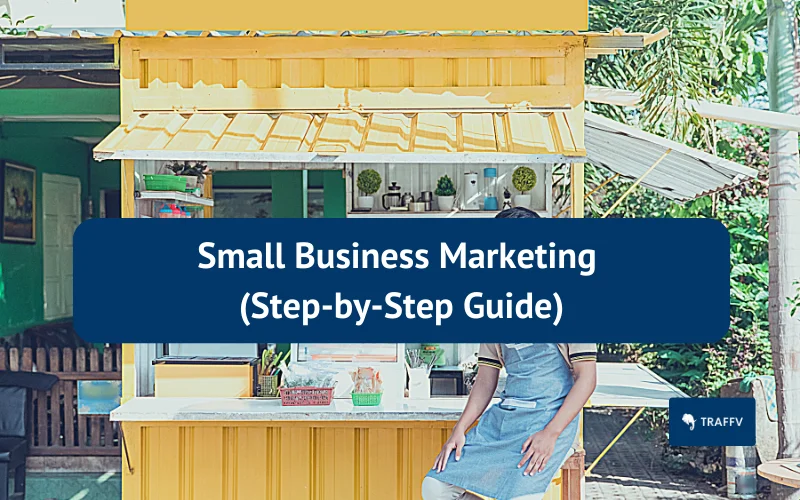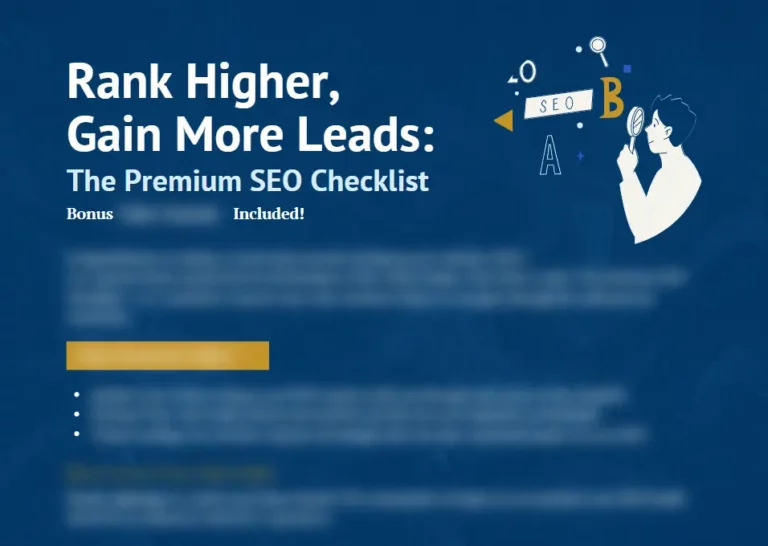In an ever-evolving economic landscape, small businesses must navigate through the challenges of staying relevant and competitive.
This is where the power of a robust small business marketing strategy becomes crucial.
It is the beacon that guides small businesses towards their target audience, helping them communicate their unique value proposition effectively.
But how does a small business create a successful marketing strategy?
And how can small businesses leverage both digital and offline marketing avenues to reach their potential customers?
Let’s delve into the world of small business marketing and explore these questions.
TL:DR
- Small business marketing is a strategy that utilizes all available channels to build relationships with customers and increase revenue.
- Successful small business marketing involves understanding the target audience, creating a strong brand and messaging, utilizing multi-channel approaches, optimizing website content for search engines results pages (SEO), leveraging content & social media strategies, print advertising & direct mail campaigns.
What is Small Business Marketing?
Imagine a road that leads to your business’s success.
That road is paved with the bricks of your small business marketing strategy.
It involves utilizing all available marketing channels and disciplines to gain visibility for your services or products.
The goal of this strategy is not just about enhancing revenue and expanding market share.
It’s about building a bridge between your business and your customers, a bridge that strengthens brand recognition and fosters customer loyalty.
While advertising can create initial contact with customers, modern marketing offers numerous ways to forge a relationship with your audience.
From paid outreach through social media to text message marketing services, the possibilities are vast.
Crafting a small business marketing strategy can open doors to increased revenue, dedicated customers, and even opportunities like recruiting new employees or opening additional locations.
But like any journey, it is essential to plan the route and ensure that your marketing endeavors are cost-effective and rewarding.
Why is Marketing Important for Small Businesses?
Marketing is the lifeblood of small businesses.
It is the process of drawing in and maintaining customers, creating brand awareness, and staying competitive within the market.
However, small businesses often face unique challenges.
Keeping up with evolving search algorithms and the increasing cost-per-click can be a daunting task.
Yet, by overcoming these challenges, small businesses can reap significant benefits.
Imagine your small business as a tree.
Marketing is like the sunlight that helps it grow.
It facilitates customer acquisition and retention, boosts brand awareness, and assists in staying ahead of competitors. But how does a small business harness this sunlight?
The answer lies in implementing effective marketing strategies.
From networking and partnerships to social media marketing, these strategies act as the photosynthesis process, converting sunlight into food for the tree to flourish.
Steps for a Successful Small Business Marketing Strategy
Just like a seed needs the right conditions to sprout, a successful small business marketing strategy requires a carefully planned approach.
This approach begins with understanding your target audience, creating a strong brand and messaging that resonates with them, and utilizing a multi-channel approach to reach them.
In this section, we will delve deeper into these steps, breaking them down into manageable chunks to provide a detailed roadmap for your small business marketing journey.
So buckle up and get ready to step on the accelerator as we navigate through the intricate lanes of target audience identification, branding and messaging, and a multi-channel approach.
1. Target Audience Identification
Imagine setting off on a journey without a destination in mind.
Without an end point, how do you decide which road to take?
Similarly, in marketing, the journey begins with identifying the target audience.
This involves a deep understanding of who your potential customers are, their needs, desires, and the content that would appeal to them the most.
Market research can be conducted via surveys, focus groups, or by analyzing the competition.
Creating a buyer persona is like drawing a map of your destination.
This fictional representation of your ideal customer includes demographic information, hobbies and interests, and provides valuable insights into your target audience.
This persona can assist small businesses in optimizing their website by incorporating search terms and topics that are relevant to their target audience, thereby potentially resulting in more leads and sales.
2. Branding and Messaging
Branding and messaging is akin to the vehicle you choose for your journey.
It carries your business’s identity and communicates its unique value proposition to the target audience.
As such, creating a unique brand identity and messaging that resonates with the target audience is an essential part of small business marketing.
Refined messaging is like tuning the engine of your vehicle.
It involves:
- Creating compelling messaging that informs customers
- Highlighting value
- Demonstrating authority or expertise
- Setting your business apart from competitors
The brand story is the unifying element for a brand, enabling people to relate to the business and its purpose.
3. Multi-Channel Approach
A multi-channel approach in small business marketing is like using multiple routes to reach your destination.
It involves utilizing various marketing channels, such as social media, email, and advertising, to effectively reach potential customers.
Just as you would choose the most efficient route to reach your destination, choosing the most effective marketing channels is crucial for small businesses.
Small businesses need to be strategic in their approach to marketing.
Small business owners should consider the target audience.
Digital Marketing Strategies for Small Businesses
Navigating the digital landscape can be a daunting task for small businesses.
But fear not!
With the right digital marketing strategies, small businesses can effectively traverse this terrain to reach their target audience.
These strategies, including Search Engine Optimization (SEO), Content Marketing, and Social Media Marketing, act as the compass, guiding small businesses through the digital landscape.
In this section, we will delve deeper into these strategies, providing a comprehensive guide to effectively implementing them.
Just like a seasoned traveler, equipped with the right tools and strategies, small businesses can navigate the digital landscape to reach their destination.
Search Engine Optimization (SEO)
Search Engine Optimization (SEO) is like the GPS of your digital marketing strategy.
It helps your website navigate through the vast internet landscape to reach the top of search engine results pages.
Making changes to individual web pages to enable them to rank higher for relevant keywords is known as SEO.
It is an important factor to consider when building and trying to get visibility for a website on search engines.
Local SEO is like the local guide in your journey, helping your business appear in location-based searches and the Google Map Pack.
This ensures that your business is visible to customers in your local area, driving more traffic to your website and potentially increasing sales.
Content Marketing
Content marketing is like the fuel that drives your digital marketing vehicle.
It involves:
- Creating and sharing valuable, relevant, and consistent content
- Attracting and retaining a clearly defined audience
- Ultimately driving profitable customer action.
Small businesses can leverage tactics such as blogging, email newsletters, and social media presence to create effective content marketing campaigns.
Key performance indicators (KPIs) like website traffic, lead generation, customer engagement, and conversions can be used to measure and analyze content marketing performance.
Social Media Marketing
Social media marketing is like the megaphone of your digital marketing strategy.
Through social media platforms like Instagram, Pinterest, and Twitter, your business can amplify its voice, reaching billions of potential customers who are actively engaging with these platforms on a daily basis.
By consistently posting engaging content and addressing any queries or issues from followers, your business can foster a strong relationship with its audience.
Social media marketing not only increases brand awareness, but also provides the opportunity to create engaging content that showcases your brand.
Offline Marketing Strategies for Small Businesses
While digital marketing is crucial, let’s not forget the power of offline marketing strategies.
By engaging in networking and partnerships, utilizing print advertising, and sending direct mails, small businesses can complement their digital efforts and reach a wider audience.
Offline marketing strategies can be a great way to reach potential customers who may not be online, as well as engage with existing customers.
Networking and Partnerships
Networking and partnerships are like the fellow travelers you meet on your journey.
By forming relationships with other businesses or individuals, you can broaden your reach and acquire new customers.
Engaging in networking and partnerships offers a plethora of benefits.
It can provide access to support, solutions to problems, new business opportunities, and shared knowledge.
It can also aid in building partnerships and collaborations, increasing credibility and visibility, and gaining a competitive edge in the industry.
Print Advertising and Direct Mail
Print advertising and direct mail are like the traditional routes on your marketing journey.
These methods involve sharing promotional materials directly with prospective customers, either through mail or printed materials like:
- newspapers
- magazines
- brochures
- flyers
- billboards
While these methods come with their own set of challenges, the benefits they offer cannot be overlooked.
They can target specific audiences, create lasting impressions, and even track outcomes.
With clear goals, engaging messages, visual elements, a call to action, and constant monitoring, print advertising and direct mail can be an effective part of your marketing strategy.
Measuring and Analyzing Marketing Performance
Just as a traveler checks the map to ensure they are on the right path, measuring and analyzing marketing performance is essential for small businesses.
This allows them to track the success of their campaigns, identify areas for improvement, and make data-driven decisions.
Key Performance Indicators (KPIs)
Key Performance Indicators (KPIs) are like the milestones on your marketing journey.
They are quantifiable measurements used to evaluate progress towards predetermined goals or objectives.
They act as markers of performance, guiding businesses in assessing their strategic, financial, and operational accomplishments.
KPIs provide a means to evaluate progress towards predefined objectives.
They help businesses recognize areas for improvement, monitor performance, and make decisions based on data.
Examples of KPIs include:
- Customer satisfaction
- Website traffic
- Sales revenue
- Cost per acquisition
- Return on investment
Data-Driven Decision Making
Data-driven decision making is like using a compass on your marketing journey.
It helps guide strategic business decisions, ensuring they are aligned with the company’s goals and objectives.
Leveraging data and metrics can lead to more informed decisions, cost savings, and optimized efficiency.
Data-driven decision making involves the following steps:
- Identifying the necessary data
- Collecting and analyzing the data
- Interpreting the results
- Making decisions based on the findings
This process can be time-intensive and require specialized skills, but the benefits it offers make it a worthwhile endeavor.
Tips for Small Business Marketing Success
Just as a traveler needs a guide to navigate unfamiliar terrain, small businesses can benefit from guidance to help them navigate the world of small business marketing strategies.
By setting realistic goals, prioritizing marketing channels based on the target audience, and continuously adapting and evolving the marketing strategy, small businesses can achieve marketing success.
Setting Realistic Goals
Setting realistic goals is like setting the destination for your journey.
It provides a clear direction for your marketing efforts and helps concentrate resources and efforts on attainable objectives.
By having a clear goal in mind, you can create a plan of action that will help you.
Prioritizing Marketing Channels
Prioritizing marketing channels is like choosing the right vehicle for your journey.
Recognizing the platforms where your customers spend their time is essential to ensure that you are successfully connecting with them.
Just as you would carefully select your vehicle based on the terrain you are traveling, you should select your marketing channels based on your target audience and goals.
Concentrating on areas where there are gaps hindering growth and setting a performance goal around that one key area can be an effective strategy.
Continuously Adapting and Evolving
In the ever-evolving world of marketing, the ability to adapt and evolve is crucial.
Just as a traveler adjusts their route based on changing road conditions, small businesses must be willing to tweak their marketing strategies based on market trends and customer behavior.
By understanding the needs of their target audience, businesses can create campaigns that are tailored to their customers.
Summary
As we conclude this journey through the world of small business marketing, we hope that you have gained valuable insights into the essential steps, strategies, and tools that can help your business thrive.
Whether you’re navigating the digital landscape with SEO, content marketing, and social media, or leveraging offline avenues like networking, partnerships, and print advertising, remember that the journey is as important as the destination.
Continually measure and analyze your performance, set realistic goals, prioritize your channels, and keep evolving your strategies.
And remember, you don’t have to journey alone.
With the right partners, such as an SEO company, you can optimize your marketing efforts and steer your business towards success.
Frequently Asked Questions
What is small business marketing?
Small business marketing is the process of getting your products or services in front of the eyes of potential customers, to grow revenue and expand market share.
It involves strategies such as targeting a specific audience, understanding their needs, and providing tailored solutions.
How do I market my small startup business?
Focus on your competitors’ strategies, create quality newsletters, leverage social media appropriately, listen to customer feedback, leverage word of mouth, optimize website speed, and encourage user-generated content to market your small startup business.
These strategies can help you reach a wider audience and build a strong brand presence.
How can I grow my small business with marketing?
Grow your small business with marketing by learning from competitors, identifying and understanding your target audience, developing a mobile-friendly website, creating high-quality content, nurturing potential customers with email campaigns, and utilizing loyalty & affiliate programs.
Why is marketing important for small businesses?
Marketing is essential for small businesses to attract and retain customers, build brand recognition, and stay competitive.
What are some digital marketing strategies for small businesses?
SEO, content marketing and social media marketing are effective digital marketing strategies for small businesses, helping them increase visibility and drive traffic.




